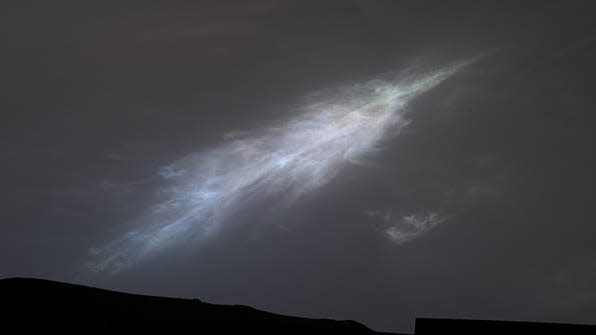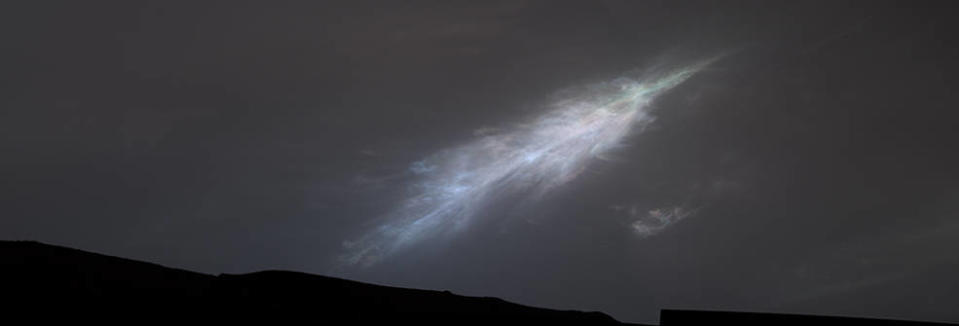NASA’s Mars Rover Spotted ‘Colorful Clouds’ on Red Planet

Despite being more than a decade old, NASA’s Curiosity rover is still delivering stunning images and insights from the surface of the Red Planet. Case in point: The workhorse rover recently snapped some of the clearest images of sun rays on Mars yet.
The pics were taken as the sun set over Mars on Feb. 2, and shows sunbeams—known as crepuscular rays—shooting through clouds in dramatic fashion. Along with being visually stunning, the image also builds off of research in Martian cloud formation and gives scientists insight into the weather patterns on Earth’s neighbor.
These pics were snapped as part of NASA’s twilight cloud survey, which began in January and will run through mid-March. The twilight clouds, which are also known as noctilucent or “night shining” in Latin, glow brightly against the darkening sky during sunset. That’s because they’re made of ice crystals, and only darken completely once the sun drops below their altitude. This process actually helps scientists on Earth determine their precise height in the sky.

The pics were taken as the sun set over Mars on Feb. 2, and shows sunbeams—known as crepuscular rays—shooting through clouds in dramatic fashion.
The clouds in the image are at a higher altitude than most Martian clouds. According to the agency, that means that they’re likely made of dry ice (yes, the same stuff they put in your cocktails to make them smoky) due to how cold the planet’s atmosphere gets. Clouds are relatively rare in the thin and dry Martian atmosphere. They usually form during the coldest time of year while the planet is furthest from the sun—which is why they’re mostly made of ice crystals.
Curiosity also snapped a pic of a “set of colorful clouds” in the shape of a feather on Jan. 27, according to a NASA blog post. The smattering of colors was created after the clouds were illuminated by sunlight in a phenomenon known as iridescence. This gives researchers even more insight into the particles that make up the actual clouds.

Curiosity also snapped a pic of a “set of colorful clouds” in the shape of a feather on Jan. 27.
“Where we see iridescence, it means a cloud’s particle sizes are identical to their neighbors in each part of the cloud,” Mark Lemmon, an atmospheric scientist with the Space Science Institute in Boulder, Colorado and NASA, said in a statement. “By looking at color transitions, we’re seeing particle size changing across the cloud. That tells us about the way the cloud is evolving and how its particles are changing size over time.”
While Curiosity snapped photos in black-in-white of similar clouds back in 2021, NASA used the rover’s color Mastcam in order to get these latest images. It was a good thing they did too since we now got some excellent out-of-this-world eye candy for their troubles.
Got a tip? Send it to The Daily Beast here
Get the Daily Beast's biggest scoops and scandals delivered right to your inbox. Sign up now.
Stay informed and gain unlimited access to the Daily Beast's unmatched reporting. Subscribe now.

